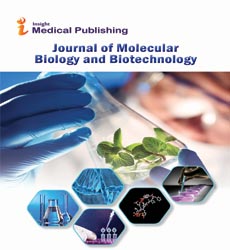A Brief Note on Operon Concept
Ram Chandra*
Department of Molecular Biology, University of Calicut, Kerala, India
- *Corresponding Author:
- Ram Chandra
Department of Molecular Biology,
University of Calicut,
Kerala,
India,
E-mail: ramchandra23@gmail.com
Received Date: September 1 2021; Accepted Date: September 14 2021; Published Date: September 21, 2021
Citation: Chandra R (2021) Editorial: A Brief Note on Operon Concept. J mol Biol Biotech. Vol.6 N.5: e004
Description
DNA is that the universal genetic material presents in nucleus of living cells. Depending upon species DNA may contain several hundred to many thousand genes. Once we considered eukaryotic multicellular organisms like plants and animals, they're made from differing types of cells which significantly vary in structure and performance. However, genetic makeup (composition of genes) is same altogether the cells of a living organism. Now the question rises, when the cells are genetically identical how they exhibit such a lot of difference in structure and performance. it's to be understood that a cell may contain thousands of genes to supply thousands of enzymes but a cell will make only that protein or enzyme which is required by the cell at a specific time and also only that quantity or concentration of the protein are going to be made which is required by the cell. This mean that at any given time within the cell, only the genes whose product (protein) is required are switched on, whereas the remaining genes whose proteins aren't required (at a specific time) are transitioned. However, a gene which is transitioned at a specific time could also be switched on at once more interval when its protein is required. This process is named as differential gene action or expression. This control over organic phenomenon is additionally essential in order that the cell isn't over flooded by synthesis of enzymes which aren't required. Thus, synthesis of same enzymes could also be induced at a while and repressed at once more depending upon the physiological requirement of the enzymes by the cell
From the outgoing discussion it appears that a cell has auto control mediated by the gene itself. Jacob and Jacques Monad (1961) first of all suggest an idea to elucidate this induction and repression of genes. The model proposed by them was named as operon model and is considered to be one among the leading biological discoveries. An operon may be a cluster of functionally related genes that are controlled by a shared operator. They contain multiple genes grouped alongside a promoter and an operator. Operons are present in prokaryotes (bacteria and archaea) but are absent in eukaryotes. In some situations multiple operons are controlled by an equivalent regulatory protein; in these cases, the operons form a regulon. An operon is often defined as a set of gene s whose transcription is controlled and controlled by the coordinated action of the regulator, operator, and promoter. A unit is formed from linkage group that is thought to manage other genes liable for protein synthesis. An operon may be a set of genes transcribed under the control of a gene. More specifically, an operon may be a segment of DNA containing adjacent genes including structural genes, and gene, and a regulator gene. An operon is thus a functional unit of transcription and genetic regulation. It is often said that operon consists of regulatory gene, promoter gene, gene, structural gene. Operons are characteristic feature of bacterial chromosome.
Open Access Journals
- Aquaculture & Veterinary Science
- Chemistry & Chemical Sciences
- Clinical Sciences
- Engineering
- General Science
- Genetics & Molecular Biology
- Health Care & Nursing
- Immunology & Microbiology
- Materials Science
- Mathematics & Physics
- Medical Sciences
- Neurology & Psychiatry
- Oncology & Cancer Science
- Pharmaceutical Sciences
